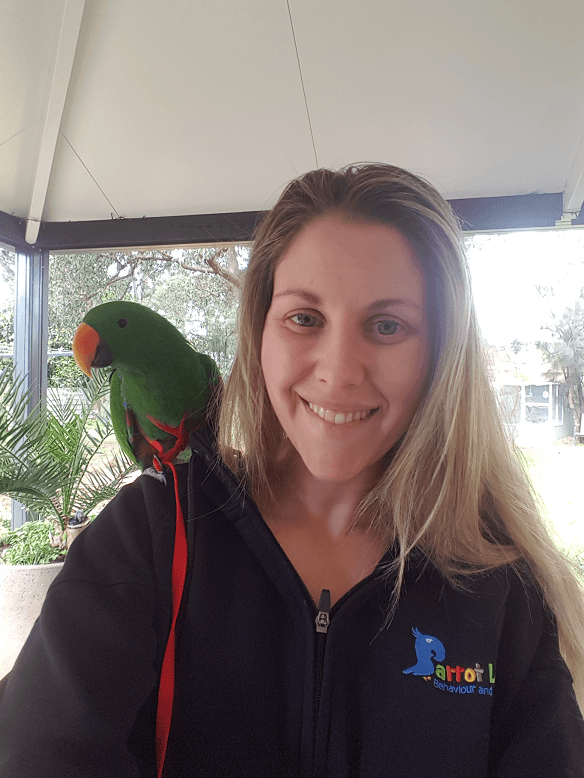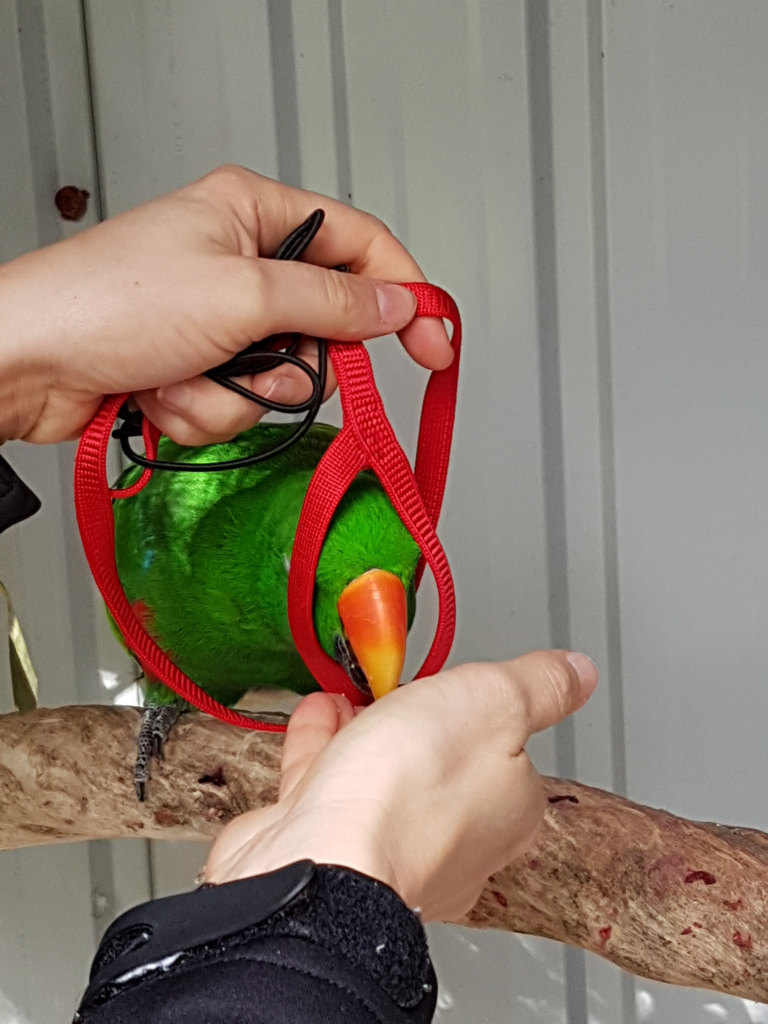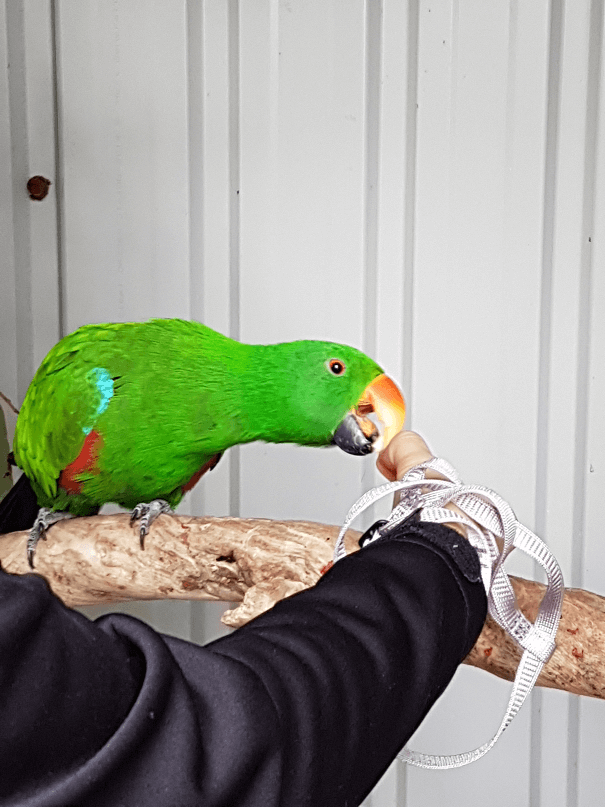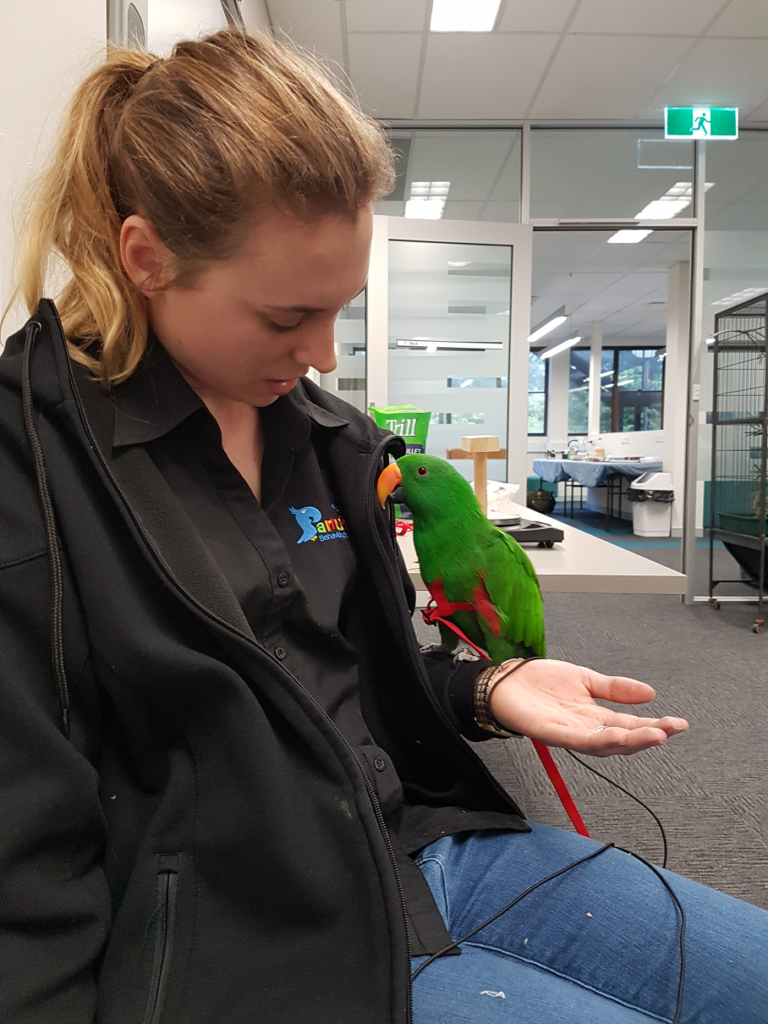Harness Training your parrot
What is harness training?
Harness training is a great way to allow your parrot to experience the outdoors safely, allows exposure to essential
natural sunlight, and is a fantastic form of enrichment for your parrot. Harnesses are also a very popular alternative
to wing-clipping.
Harnesses are a great experience for parrot if they are comfortable wearing one. Depending on your parrot’s age,
temperament and previous history with a harness, training your parrot to wear one can be fast or slow. Young birds being hand-reared are often the easiest to train, as they are generally very tactile, less mobile, and once the harness is paired with positive experiences, they are much less likely to develop fear
responses to it later.
We encourage all companion parrot breeders to gently introduce harnesses at an early stage, prior to parrots heading
off to their new homes. There are many different types of harnesses on the market. However, we recommend the Aviator Brand.
Before you harness train your parrot, make sure that your parrot is of the temperament or level of training where they will enjoy going outside on a harness. Outdoor environments can be scary for a bird that has spent most of its life indoors, so careful thought needs to be put into desensitising your parrot. Nervous, flighty or non-hand tame birds may need a lot of prior training with handling before the harness is introduced. The best candidates are those
birds that sit calmly on hands or shoulders already, and have previous experience in outdoor aviaries.

Harness training stages
- Practise manipulating your harness (away from the bird) until you can deftly put it on and off a pretend bird (soft toys work well for this!)
- Using rewards, train your parrot to accept touch in the same technique that you will put the harness on: on the head, under one wing, under the second wing, then on the belly.
- Desensitise the harness by holding it away from your parrot, slowly bringing it closer until your parrot looks at it, but doesn’t move away. Reward your parrot, then move the harness away. Depending on your bird, you may have to start across the room. Repeat, bringing the harness a bit closer each time as your parrot is ready. Once there is no reaction from your parrot, you can loop the harness over your forearm or hand and commence point to point training with the same hand, so the parrot is walking towards the harness to obtain a treat.
- Continue point to point training but now, with your second hand, hold the harness and offer a treat through one of the larger loops. Each repetition, the position of your treat will be further back through the harness, so your bird must reach through the hole to get the treat. Reward your parrot heavily for new advancements, and introduce an ‘in’ and ‘out’ cue for putting its head in and out of the harness, rewarding for both separate behaviours. Over time, reduce the size of the larger loop until your parrot is reaching through a loop the size of the harness’s head hole. Then you can move straight onto the real head hole.
- Extend the duration your parrot has their head in the harness by offering several treats at rapid, then slower intervals, only rewarding for ‘out’ when asked. When the parrot is calm through this process, you can begin slowly introducing new stages, such as one wing in, and then the other wing, then securing the harness in small stages as your parrot is ready.
- Once your parrot is harnessed, walk it around indoors briefly before removing the harness. Increase duration and
introduce more environments as your parrot is ready

Training tips
- Use a training harness to train your parrot before using the harness with the leash.
- Don’t rush. The more patient you are in teaching this behaviour, the more long-term success you will have. If you are having trouble, book in for a coaching session with the Parrot Life® team
Parrot Life Behaviour and Training provide in-person or online consultations, training and workshops for any and every bird behaviour!
contact@parrotlife.com.au
www.parrotlife.com.au


